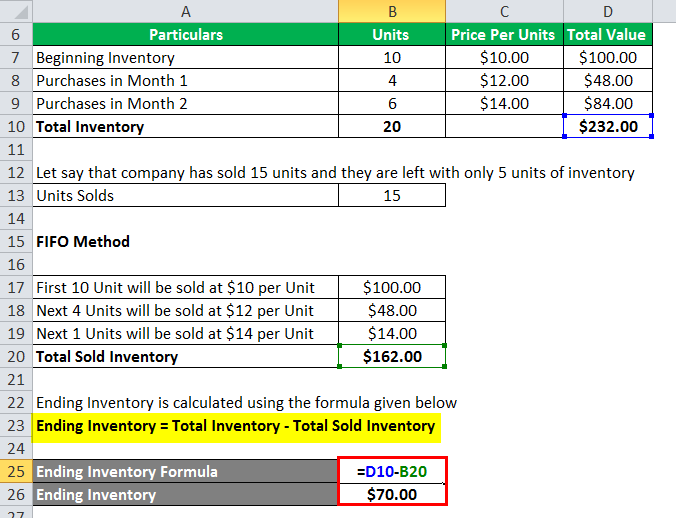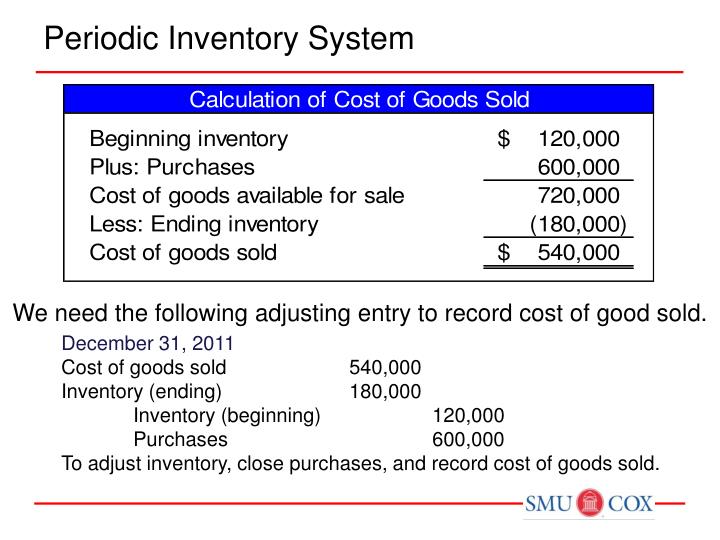
It is for this reason that the adoption of LIFO Method is not allowed under IAS 2 Inventories. FIFO is only effective if everyone involved in inventory management understands and follows the principles consistently. Effective training aligns staff practices, reduces mistakes, and improves overall inventory accuracy. In the FIFO Method, the value of ending inventory is based on the cost of the most recent purchases.
How to Calculate FIFO
Last-in, first-out values inventory on the assumption that the goods purchased last are sold first at their original cost. Under the LIFO system, many food items and goods would expire before being used, so this method is typically practiced with non-perishable commodities. A company also needs to be careful with the FIFO method in that it is not overstating profit.
Consider Real Inventory Flow
In the chemicals industry, FIFO is essential for managing chemicals and raw materials that have a limited shelf life or require specific storage conditions. This is important, since materials may include structural steel, cement, lumber, prefabricated windows, and more. Calculating the cost of goods sold (COGS) with FIFO is a straightforward process.
Products
Since FIFO aligns inventory operations with financial reporting, inventory valuation transparency increases. The ability to streamline inventory control allows for enhanced profitability analyses. True profit margins can be determined because sales revenue matches the actual cost of inventory sold. Under the FIFO inventory method formula, the goods purchased at the earliest are the first to be removed from the inventory account. This results in remaining in the inventory at books being valued at the most recent price for which the last inventory stock is purchased.
The key takeaway here is that when you’re calculating the cost of goods sold or ending inventory using periodic FIFO, the date on which the company sold the goods doesn’t matter. You simply assume that the oldest stock is sold first and apply this assumption to your calculations. But, what if you knew the cost of goods sold and wanted to calculate ending inventory instead? Ending inventory is equal to goods available for sale minus the cost of goods sold. If a physical ending inventory count hasn’t happened yet, a company will use this formula to compute the ending inventory balance. FIFO is recognized and accepted by international financial reporting standards (IFRS) and generally accepted accounting principles (GAAP) in the United States.
- FIFO usually aligns more closely with the actual movement of goods in most businesses.
- Suppose it’s impossible or impractical for a company to understand the impact of switching from FIFO to LIFO.
- Jeff is a writer, founder, and small business expert that focuses on educating founders on the ins and outs of running their business.
When properly implemented, FIFO helps companies streamline their inventory processes, enhance decision-making, and maintain clear financial records. Successful implementation of the FIFO method requires accurate record-keeping, physical organization of inventory, staff training, regular audits, and integration with accounting systems. The FIFO method offers accuracy in profit margins, simplifies cost calculations, aligns with international standards, and provides up-to-date inventory data. While it may lead to higher taxes during inflation and struggle with price volatility, its benefits often outweigh these challenges. First in, First out inventory method is compliant with IFRS and GAAP, which makes it ideal for companies with global operations or aspirations.

In one case, JIT tire distributor Myers Tire Supply used FIFO to handle fast-paced inventory operations. To enhance tracking of its rapidly rotating stock, the company implemented mobile barcoding software to gain pinpoint accuracy and significantly greater efficiency. As mentioned previously, FIFO reflects the true cost of inventory because it can be accurately represented in financial statements. Accuracy of this kind allows for more informed decision-making and financial planning. The $42,000 cost of goods sold and $36,000 ending inventory equals the $78,000 combined total of beginning inventory and purchases during the month. The FIFO method of inventory management aligns new orders with oldest inventory to ship first to decrease distribution of outdated or expired goods.
She holds a Masters Degree in Professional Accounting from the University of New South Wales. Her areas of expertise include accounting system and enterprise resource planning implementations, the 10 best tax preparation services in baltimore, md 2021 as well as accounting business process improvement and workflow design. Jami has collaborated with clients large and small in the technology, financial, and post-secondary fields.
Depending upon your jurisdiction, your business may be required to use FIFO for inventory valuation. The biggest disadvantage to using FIFO is that you’ll likely pay more in taxes than through other methods. FIFO is the best method to use for accounting for your inventory because it is easy to use and will help your profits look the best if you’re looking to impress investors or potential buyers. It’s also the most widely used method, making the calculations easy to perform with support from automated solutions such as accounting software.
Periodic FIFO (First In, First Out) is an inventory valuation method used in accounting. As the name suggests, it’s used in the context of a periodic inventory system, which updates inventory counts and costs only at the end of each accounting period (like a month, quarter, or year). FIFO (first-in first-out) and LIFO (last-in first-out) are inventory management methods, but they’re different in how they approach the cost of goods sold. While it’s useful to have a basic understanding of how to use the FIFO inventory method, we strongly recommend using accounting software like QuickBooks Online Plus. It’ll do all of the tedious calculations for you in the background automatically in real time.
